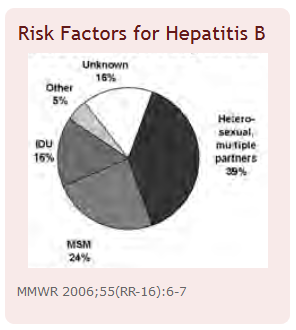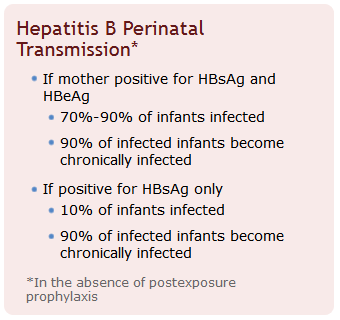Hepatitis B risk factors: Difference between revisions
| Line 4: | Line 4: | ||
==Overview== | ==Overview== | ||
Common risk factors in the development of HBV infection includes sexual contact with infected individuals, infected household contacts, [[intravenous drug use]], travel to endemic regions, [[perinatal]] transmission from infected mothers to infants, and occupation. | |||
==Risk Factors== | ==Risk Factors== | ||
Revision as of 18:52, 3 September 2015
|
Hepatitis B |
|
Diagnosis |
|
Treatment |
|
Case Studies |
|
Hepatitis B risk factors On the Web |
|
American Roentgen Ray Society Images of Hepatitis B risk factors |
|
Risk calculators and risk factors for Hepatitis B risk factors |
Editor-In-Chief: C. Michael Gibson, M.S., M.D. [1]; Associate Editor(s)-in-Chief: João André Alves Silva, M.D. [2]
Overview
Common risk factors in the development of HBV infection includes sexual contact with infected individuals, infected household contacts, intravenous drug use, travel to endemic regions, perinatal transmission from infected mothers to infants, and occupation.
Risk Factors
Individuals who are at increased risk of hepatitis B infection include:
- Infants born to infected mothers
- Young children in day-care or residential settings with other children in endemic areas
- Sexual/household contacts of infected persons
- Patients and employees in haemodialysis centres
- Injection drug users sharing unsterile needles
- People sharing unsterile medical or dental equipment
- People providing or receiving acupuncture and/or tattooing with unsterile medical devices
- Persons living in regions or travelling to regions with endemic hepatitis B
- Sexually active heterosexuals
- Men who have sex with men
- Hemophilia patients
- Travel to areas where hepatitis B is common
Frequent and routine exposure to blood or serum is the common denominator of healthcare occupational exposure.[1]
 |
 |